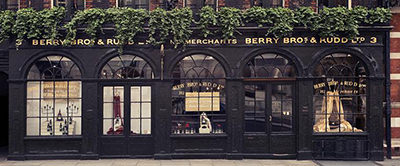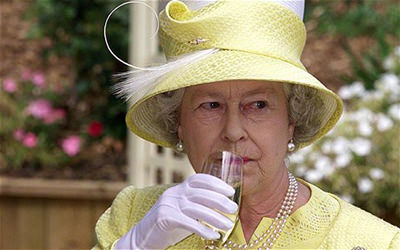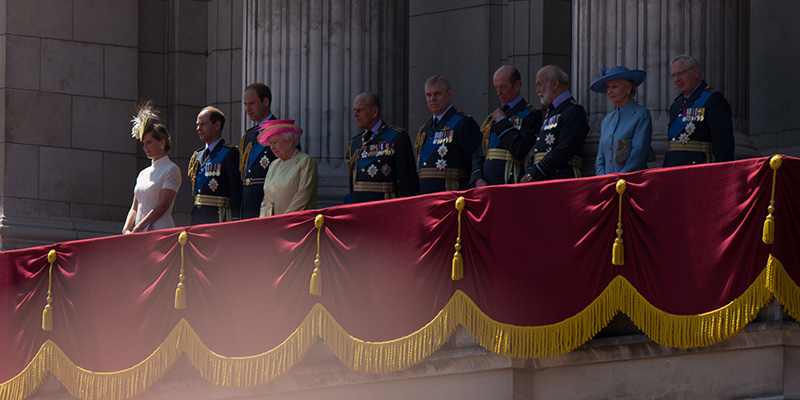There’s nothing more American than an unseemly fascination with the British royal family, and a delusional conviction that their lives are brimming with luxury. Surely, the thinking goes, selections of the Grand Crus de Bordeaux must accompany even the most casual meal at which royals are present.
But in reality, the Royal Family’s (RF) palates are hardly refined receptacles thirsting for the world’s premier vintages. In fact, overall (castles aside), your average middle-aged middle-class woman in Duluth is probably enjoying cushier lifestyle amenities than the Queen.
Since the 19th century, as the rise of the Commonwealth coincided with the decline of the Royal Empire, the royal family has steadfastly projected a staid, pudgy, dull English existence. The RF even allowed filmmakers to document them, Kardashian-style, way back in 1969, as they sat around, BBQing and chatting. The Queen makes salad! Charles and Anne grill sausages! Royals – they’re just like us! Furthering the argument that they truly are as bland as unseasoned porridge, are unmanufactured press leaks about their habits, including photos of the Queen’s predilection for cornflakes in Tupperware containers at brekkie.
Don’t get us wrong: they have and spend a lot of cash, courtesy of the hoi polloi. It’s just not doled out on anything remotely cool. But let’s get down to the important details: what are they drinking and how jealous should we be?
It’s not like the Queen can just hit a wine shop and pick up a few bottles for the weekend. There are several layers of civilians with superannuated titles that winemakers must penetrate before reaching royal lips. Most notably, there’s the Clerk of the Royal Cellar, who is in charge of all purchases of spirits and wines for the Royal Household. The Clerk also acts as a sommelier, advising on pairings for State banquets and other bold-faced events. The Yeoman of the Royal Cellar is the staffer in charge of procuring the spirits, wine, beer and ale served for regular royal meals and entertaining – private and official. (There are about 62,000 guests invited to Buckingham Palace each year in official and social capacities; the largest are the Queen’s three annual less formal spring garden parties, at which 8,000 guests attend each). In other words, the Clerk rubber-stamps the Yeoman’s choices, and the Yeoman keeps day-to-day life in the cellar humming.
Currently, the Clerk of the cellars is Simon Berry, who is also in charge of London’s oldest wine store, Berry Bros & Rudd, which opened its doors in 1698, and has stocked the Royal Cellar since the reign of King George III commenced in 1760. The Yeoman is Robert Lange, and he must be doing something delightful because the Queen gifted him a Royal Victorian Medal of honor in 2014.

The cellar is probably the most impressive feature of the royal wine program; it houses about 25,000 bottles, some of which date back to 1660. State dinners are supplied (and paid for) separately by the government hospitality department, and every aspect of the preparation and execution is approached with extreme rigor.
Then there’s the Royal Household Wine Committee. British wine critic and columnist Jancis Robinson is an insider on the committee, and she has done much to shatter the perception that the RF has access to superlative vino on the regular. According to Robinson, the RHWC is responsible for selecting about 5,000 bottles for the family to serve at the more than 300 annual events held at Buckingham and Windsor Castle. This is separate from state banquets, which, as noted above, are handled by a hospitality committee.
Robinson wrote in the Financial Times that the “majority of the wines we buy are either non-vintage Champagne (supplied at an average price considerably lower than any supermarket special offer I have come across) or relatively modest wines for big receptions, the likes of inexpensive New Zealand Sauvignon Blanc and the most basic red Bordeaux.”
The phrases “basic” and “supermarket special” fail to evoke the glam befitting castle-dwellers, and the lashings of reality becomes only more grim as numbers are crunched and specific examples are offered up for the reader’s cringing perusal. After a morning of blind tasting potential wines, a bottle of Italian Rosso Piceno (for about $5.97) and a white Macon-Uchizy from Justerini & Brooks (for about $10.86) were selected for her guests, Jancis writes. (To be fair, they also get to pick finer wines for more important guests). Other members of the committee – a wine merchant with the posh London outfits Corney & Barrow and Justerini & Brooks, plus a Michelin-starred chef, Michel Roux Jr. – have elevated palates, and Jancis contends that tastings for the RF probably represent a “gustatory nadir” for them. They do occur in the cellar of the Buckingham Palace though.
How prodigious is the RF appetite for supermarket specials? The Queen Mum’s (1900-2002) truly incredible drinking habits were well-documented, with a gin and Dubonnet cocktail called the Zaza beginning at noon, red wine and port with lunch, then a martini at 6 pm, followed by two glasses of Veuve Cliquot at dinner, but the current royal’s habits are tamer, and therefore, provoke less behind-the-hand tittering and tabloid coverage.
The Queen also (according to the Royal family blog) goes for a Gin & Dubonnet refresher. Prince Philip apparently likes his Boddington, while the Prince of Wales is a whiskey man. (He produces his own, called Barrogill). The Duke and Duchess of Cambridge, while enjoying cocktails like the Crack Baby (passion fruit juice, vodka, raspberry liqueur topped with champagne) when they were out clubbin’ at all hours, depressingly, have entered the dreaded parents of toddlers zone of middle-class responsibility. The Duke enjoys a pint every now and then (Stella, Guinness), but the Duchess likes … water. Prince Harry, thank goodness, still likes Ciroc Ultra, and lots of it.

If you really want to get a decent drink at a castle in England, you need to be important enough to be invited to a state banquet dinner – preferably one in honor of the head of state of a country that has billions of dollars worth of potential deals on the table with the U.K. In October of 2015, the RF put on a dinner with a $200,000 wine tab for Chinese President Xi Jinping. Roughly 170 VIPs attended, and the Duchess of Cambridge, Kate Middleton, was seated next to Xi, a sign that everyone was very serious about the $45 billion slate of economic deals at stake between the U.K. and China.
Interestingly, they also used the opportunity to draw attention to Britain’s nascent wine industry, serving a British sparkling wine as an aperitif. The 2009 Ridgeview Grosvenor Blanc de Blancs retails for about $45, a significant step-up from the New Zealand Sauvignons. Cru Meurseault Santenots from the Marquis d’Angerville, at $80 a pop was a served with turbot, and dessert (pudding!) was paired with a 1977 Warre port. The palace sommeliers saved the big guns for the main course (venison, braised cabbage), which they paired with a 1989 Chateau Haut Brion, retailing at about $2,175 a go. Forbes, always ready to whip out the calculators, estimated that the Haut Brion probably cost about $184,875 alone, with another $50,000 spent on the other wines.
Haut Brion excluded, your average Tuesday night is probably spent with a much more esoteric, not to mention tasty, bottle, than the two-buck chuck the RF is swilling. The tiara though…well, that’s another story.
Header image via WPMcB1997 / Shutterstock.com

